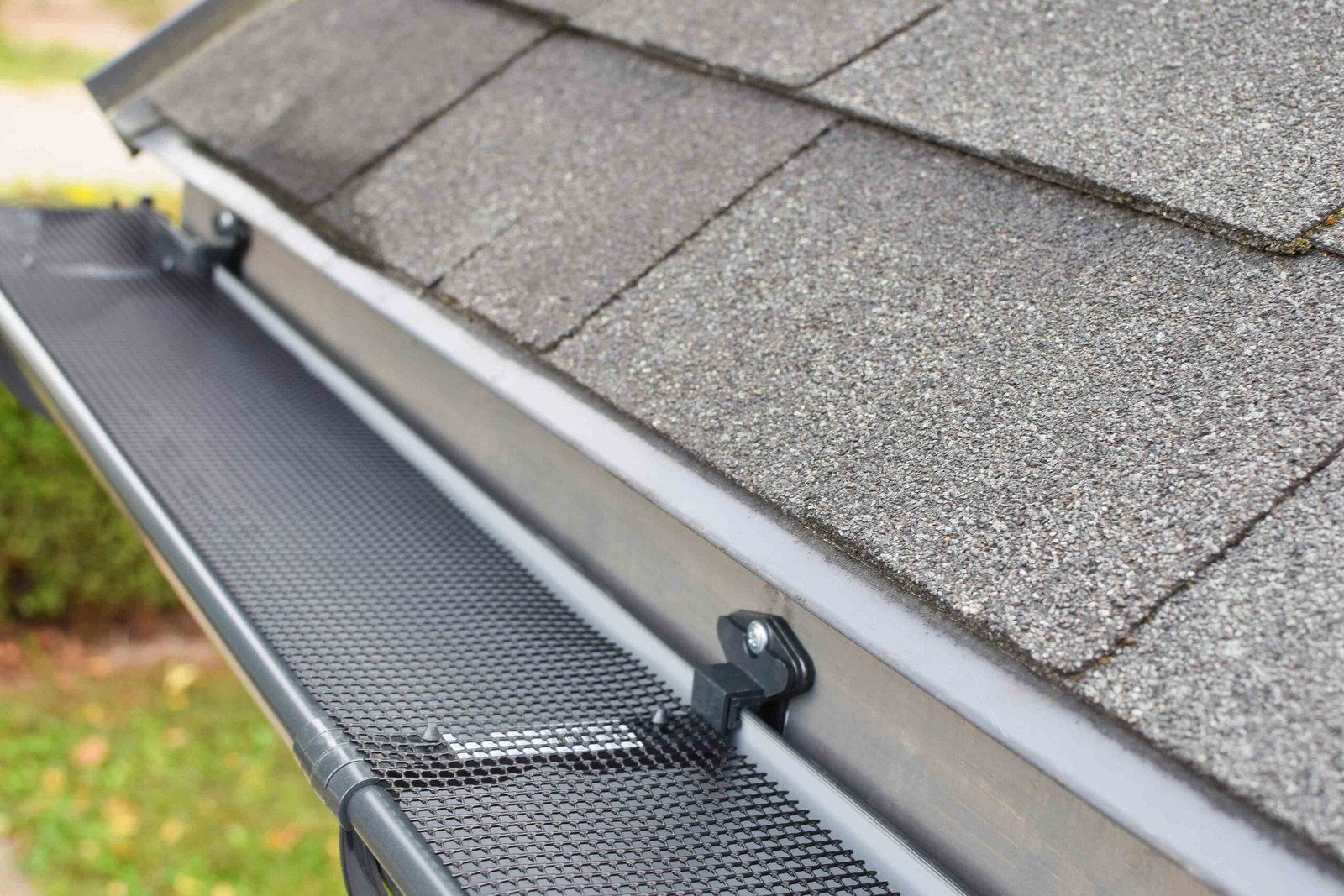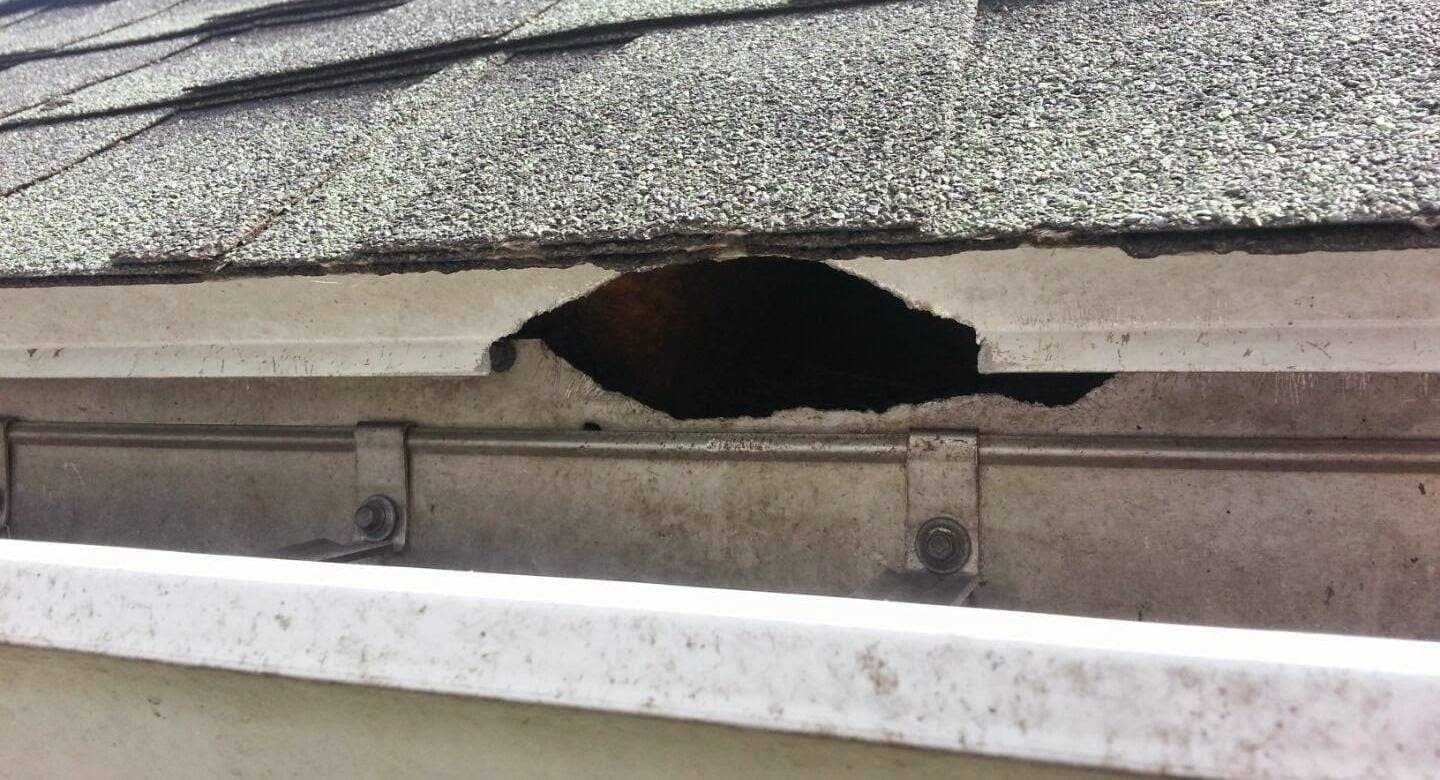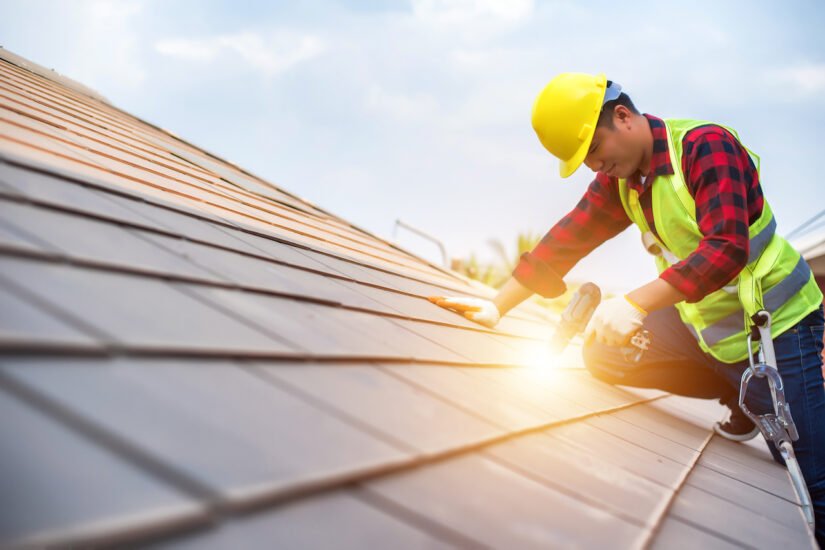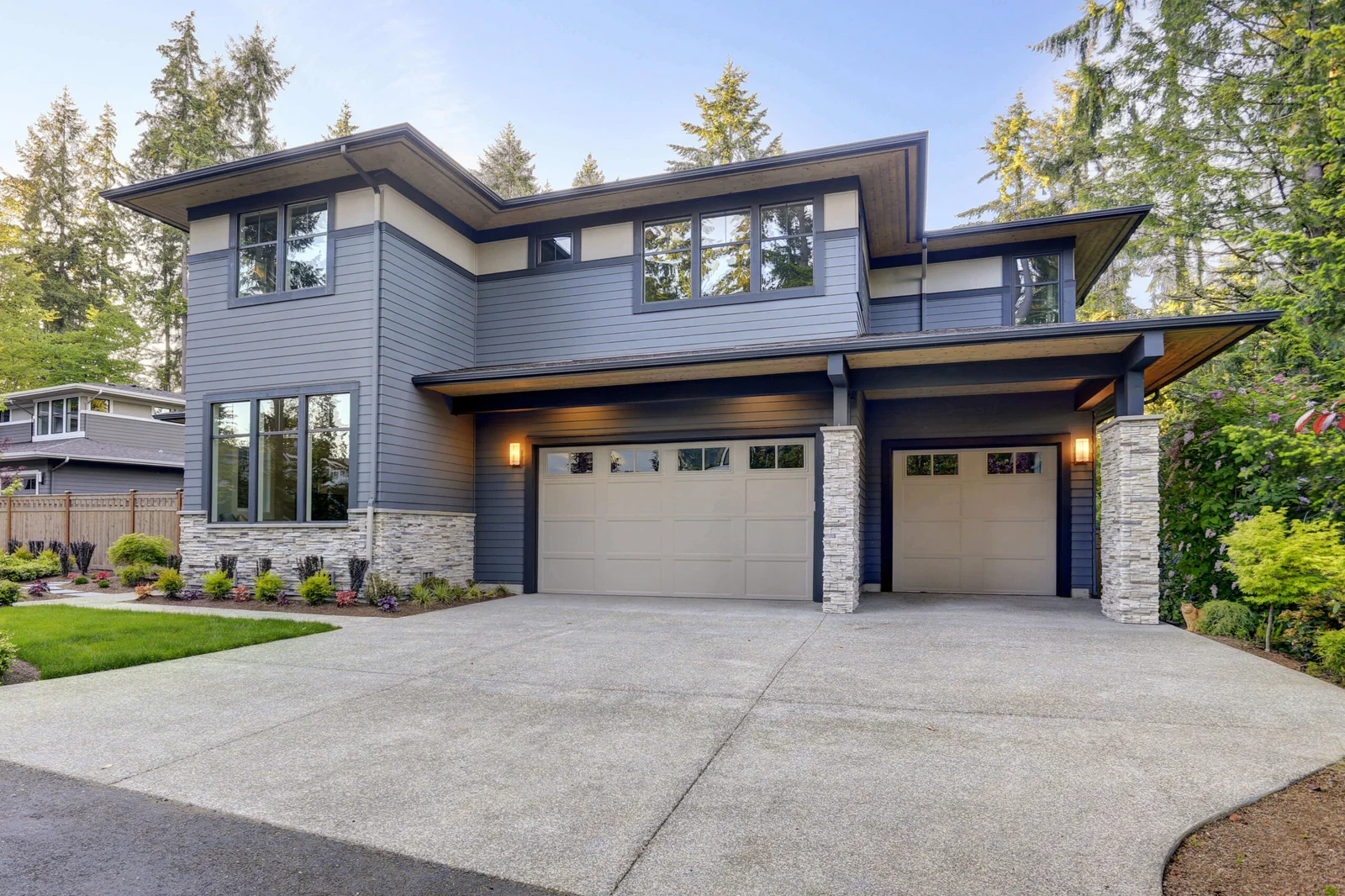Choosing the right siding for your home is like choosing the perfect outfit for a special occasion. You want something that looks great, fits well, and makes you feel confident.
But unlike clothing, siding serves a crucial function in protecting your home from weather and pests while also enhancing its curb appeal. With so many options available, it’s easy to feel overwhelmed when trying to make the best choice.
But fear not! In this article, we’ll provide you with expert tips on how to choose the perfect siding for your home.
From understanding the importance of siding materials and maintenance considerations to energy efficiency and proper installation, we’ve got you covered.
So sit back, relax, and let us guide you through the process of selecting siding that will keep your home healthy and happy for years to come.
Importance of Siding
Your home’s siding isn’t just a cosmetic feature; it plays a vital role in protecting your home from damage and pests while ensuring energy efficiency. The benefits of durable siding are numerous.
Durable siding can resist the impact of weather elements such as wind, rain, hail, and snow. It also protects against infestations by insects and other pests that may compromise the structure of your home.
Additionally, a well-maintained exterior enhances your home’s aesthetics and curb appeal. If you’re planning to sell your house in the future, investing in high-quality siding can significantly increase its resale value.
Moreover, choosing an attractive color or texture for your new siding can give your house an updated look that will make it stand out in the neighborhood.
Properly installed durable siding also contributes to energy efficiency by reducing air leakage through walls. This means reduced heating or cooling costs throughout the year.
In addition to saving money on utility bills each month, you’ll be doing your part to reduce carbon emissions and help protect the environment. Choosing the perfect siding for your home starts with understanding its importance regarding durability, aesthetics, and energy efficiency.
However, selecting between various materials can be overwhelming if you don’t know what to look for. Let’s take a step further into exploring different types of materials available for homeowners who want to replace their existing sidings.
Siding Materials
If you’re looking for low-maintenance options that mimic the look of traditional wood, vinyl siding, and aluminum siding are popular choices; however, it’s important to keep in mind that each material has varying levels of required maintenance despite their appearances.
Vinyl siding is a particularly durable option that has become increasingly popular due to its ability to imitate wood while requiring little upkeep. It’s also eco-friendly since it can be recycled at the end of its lifespan.
Aluminum siding is another low-maintenance choice, but it requires more maintenance than expected due to enamel coating and damage.
When comparing cost and maintenance between different types of siding, it’s essential to consider the long-term value of your investment. While certain materials may be more expensive upfront or require more maintenance over time, they may provide better durability and energy efficiency in the long run.
For example, Weatherbeater siding offers enhanced insulation capabilities and is Energy Star certified, making it an excellent choice for those looking for eco-friendly options with lower energy bills.
Maintenance considerations are crucial when choosing new siding for your home since proper upkeep can extend the lifespan of your investment significantly. Low-maintenance materials like vinyl or composite require minimal cleaning or repairs but may not last as long as other options such as brick or stone veneer.
Keep in mind that any type of exterior cladding will require some level of routine care such as cleaning gutters or repairing damaged areas promptly. Ultimately, finding the perfect combination of aesthetics, durability, and maintenance requirements will depend on your individual needs and preferences.
Maintenance Considerations
It’s important to keep maintenance considerations in mind when deciding on the best siding for you, so you can ensure your investment stays looking and performing great for years to come! Long-term durability is a key factor to consider.
Vinyl siding is an excellent low-maintenance option, but it can become brittle over time. Fiber cement or composite materials have superior longevity, but require more upkeep than vinyl.
Another aspect of maintenance to consider is cleaning techniques. Some types of siding require specific cleaners or methods that may be more time-consuming or expensive than others.
For example, wood siding requires regular painting or staining and must be kept free of moisture and mold. On the other hand, fiber cement siding only needs occasional washing with soap and water.
Lastly, color options can impact maintenance requirements as well. Darker colors tend to show dirt and stains more easily than lighter shades. If you prefer a bold hue like navy blue or forest green, plan on cleaning your siding more frequently to maintain its appearance.
Keep these factors in mind when making your decision about which type of siding will work best for you and your home’s needs! As we move on to discussing energy efficiency considerations, remember that proper maintenance plays a crucial role in optimizing the performance of any type of siding material.
Energy Efficiency
Properly insulating your home with Energy Star-rated siding, like Weatherbeater, is like wrapping your home in a cozy blanket during the winter – it can save you money and keep you comfortable.
When choosing to side for energy efficiency, consider cost savings, insulation options, and environmental impact. A well-insulated home can significantly reduce heating and cooling costs while making your living spaces more comfortable.
Energy-efficient siding materials come in a variety of types and styles to suit any homeowner’s needs. Weatherbeater siding provides enhanced insulation capabilities and is Energy Star certified. This means that it has been tested by the Environmental Protection Agency (EPA) to meet strict energy efficiency guidelines. By choosing this type of siding material, you can reduce your carbon footprint while enjoying lower utility bills.
When considering energy-saving options for your home’s exterior, don’t forget about proper installation techniques. Even the most advanced materials won’t be effective if not installed correctly.
Proper installation of new siding will ensure that your investment pays off in both comfort and cost savings over time. In the next section, we’ll discuss some important considerations when it comes to replacing old or damaged siding on your home without using ‘step’.
Siding Replacement
Replacing old or damaged siding can not only improve your home’s performance and appearance, but it can also protect your home from weather and pests while increasing its resale value.
When considering a siding replacement, it’s important to keep in mind the durability options available. Some materials like vinyl and fiber cement have proven to be more durable than others such as wood or aluminum. Additionally, consider the color of the siding as certain colors may fade faster than others.
Pricing factors should also be taken into consideration when deciding on a new siding material. While vinyl may be less expensive upfront, it may require more maintenance in the long run compared to other options like fiber cement or brick. It’s important to weigh the initial cost against potential future expenses that may arise due to maintenance issues.
Proper installation is crucial for the success of new siding and will ultimately determine its longevity and overall effectiveness. Hiring an experienced contractor who is knowledgeable about proper installation techniques will ensure that your home’s new siding is properly installed and functioning at peak efficiency.
The right contractor can provide guidance on what materials are best suited for your specific needs while staying within your budget, maximizing both cost savings and resale value for your home.
Cost and Resale Value
Moving on to the cost and resale value of siding replacement, it’s important to consider the balance between cost and quality. While it may be tempting to opt for cheaper materials upfront, it’s important to keep in mind that a higher initial investment can lead to long-term benefits such as improved energy efficiency and increased durability.
Conducting an ROI analysis can help you determine which siding option will ultimately provide you with the best return on your investment. When weighing the costs of siding replacement, also consider how it will impact your home’s resale value. While you may not be planning on selling your home anytime soon, investing in high-quality siding can have a significant impact on its overall value.
In fact, according to Remodeling Magazine’s Cost vs Value report, homeowners typically recoup more than half of their investment upon resale. To ensure that you’re making the most informed decision possible when it comes to choosing new siding for your home, here are some key factors to consider:
- The initial cost of different types of siding materials.
- The long-term maintenance requirements and associated costs.
- The energy efficiency rating of each option.
- The potential impact on your home’s resale value.
Ultimately, weighing these factors against one another will help you make an informed decision about which type of siding is right for your home and budget.
As we move into discussing proper installation techniques for new siding, keep in mind that even the highest-quality material won’t perform well if it isn’t installed properly.
Proper Installation
You’re ready to take the next step in transforming your home’s exterior into a beautiful and functional masterpiece – but before you start, let’s talk about how to ensure that your new siding is installed like a dream.
Proper installation is crucial for the success of your new siding, whether you choose to tackle it yourself or hire a professional contractor. If you decide to go the DIY route, make sure you have all the necessary tools and equipment on hand before starting. It’s also important to familiarize yourself with common installation mistakes, such as not properly sealing gaps or overdriving nails.
If hiring a professional contractor for your siding installation, do your research beforehand by asking for recommendations from friends and family or checking online reviews. Make sure they are licensed and insured, with experience working with the specific type of siding you’ve chosen.
Communication is key when working with contractors – make sure they understand exactly what you want and that any questions or concerns are addressed before work begins.
Properly installed siding can increase the resale value of your home and improve its energy efficiency – but only if done correctly. Choosing the right contractor can ensure your investment pays off in the long run.
In the next section, we’ll discuss some tips for selecting a contractor who will meet all of your needs and exceed your expectations.
Choosing the Right Contractor
Now that you know the importance of proper installation for your new siding, it’s time to consider choosing the right contractor.
When selecting a contractor, be sure to evaluate their qualifications and experience. Look for contractors who are licensed and insured, have a good reputation in your area, and can provide references from previous customers.
Price estimates are an important factor when choosing a contractor, but don’t make price your only consideration. A low estimate may indicate that the contractor is using cheaper materials or cutting corners on the installation process. On the other hand, a high estimate doesn’t necessarily mean that you’ll get better quality work.
Consider all factors when evaluating price estimates.
Customer reviews can also be helpful when choosing a contractor. Look for reviews online or ask for references from the contractor themselves. This will give you an idea of how satisfied previous customers have been with their work.
Choosing the right contractor is crucial to ensure that your new siding is properly installed and will last for years to come.
Frequently Asked Questions
How do I know if my current siding needs to be replaced or repaired?
Not sure if your current siding needs to be repaired or replaced?
Look out for signs of damage such as cracks, warping, or rotting. If you notice any of these issues, it may be time to contact a professional for an inspection.
A trained expert can assess the extent of the damage and recommend whether repair or replacement is necessary. Keep in mind that repairing small problem areas is possible, but in severe cases, replacement may be more cost-effective in the long run.
Ultimately, investing in proper maintenance and upkeep of your home’s siding will ensure its continued health and overall appearance.
Can I change the color or texture of my siding during the replacement process?
You may be hesitant to replace your siding because you don’t want the same boring look. But fear not, there are plenty of color options and texture choices available to customize your home’s exterior.
During the replacement process, you can choose from a variety of materials that offer different textures and finishes. You can also select a custom color or match an existing one for a seamless transition.
With so many customization possibilities, you’ll be able to create a unique look that complements your personal style and enhances your home’s curb appeal.
Are there any environmentally-friendly siding options available?
Looking for eco-friendly siding options that promote sustainability in your home’s exterior? Fortunately, there are many green siding choices available today that can help reduce your carbon footprint.
Some materials, like reclaimed wood or fiber cement, are environmentally friendly because they use natural resources and don’t emit harmful chemicals into the atmosphere. Other options, like recycled vinyl and aluminum, offer durability and energy efficiency benefits while reducing waste.
Additionally, many manufacturers have begun to incorporate sustainable practices into their production processes to further reduce environmental impact. By choosing an eco-friendly siding option for your home, you can create a green home exterior that not only looks great but also promotes sustainability.
How long does the siding replacement process typically take?
Replacing your home’s siding may seem like a daunting task, but with the right contractor and approach, it can be completed in no time.
Factors affecting replacement time include the size of your home, material chosen for the new siding, and whether you opt for DIY or professional installation.
While DIY installation may save money upfront, it can result in costly mistakes if not done correctly.
It’s important to choose a contractor who is experienced and knowledgeable in all aspects of siding replacement to ensure that the project is completed efficiently and effectively.
With the right contractor by your side, replacing your home’s siding can be a seamless process that enhances your home’s performance and appearance in no time.
Will replacing my siding affect my homeowner’s insurance policy?
Replacing your siding can affect your homeowner’s insurance policy. The impact on premiums and insurance coverage will depend on the type of material you choose for your new siding.
Certain materials, such as wood, may increase the risk of fire damage and lead to higher premiums. On the other hand, choosing a more durable and weather-resistant material like vinyl or Weatherbeater siding may result in lower premiums.
It’s important to consult with your insurance provider before making any decisions to ensure that you have adequate coverage and understand how it may be affected by replacing your siding. Choosing the right material can not only improve the appearance and energy efficiency of your home but also potentially save you money on insurance premiums in the long run.
Conclusion
Now that you have a better understanding of the importance of siding and what factors to consider when selecting the perfect material for your home, it’s time to take action.
Remember that proper maintenance and energy efficiency are crucial in ensuring your home stays healthy and happy. Choose a material that not only suits your personal preferences but also complements the architecture of your home.
Think about siding as the armor protecting your castle, shielding it from harsh elements and pesky pests. The right choice can increase curb appeal while also adding value to your property.
Don’t overlook installation as well – make sure to choose an experienced contractor who can install the siding properly, preventing potential problems down the line.
With these tips in mind, you’ll be on your way to finding the ideal siding for your beloved abode.



